Plants with large, broad leaves like Peace Lilies and Rubber Plants clean air most effectively due to their extensive surface area for trapping pollutants. You'll get the best results from species with dense, lush foliage like Boston Ferns, which have numerous stomata for filtering toxins. Snake Plants' thick, waxy leaves also excel at removing air pollutants while maintaining consistent performance. Understanding the relationship between leaf structure and air purification can transform your indoor air quality.
Understanding Leaf Surface Area and Air Purification Power
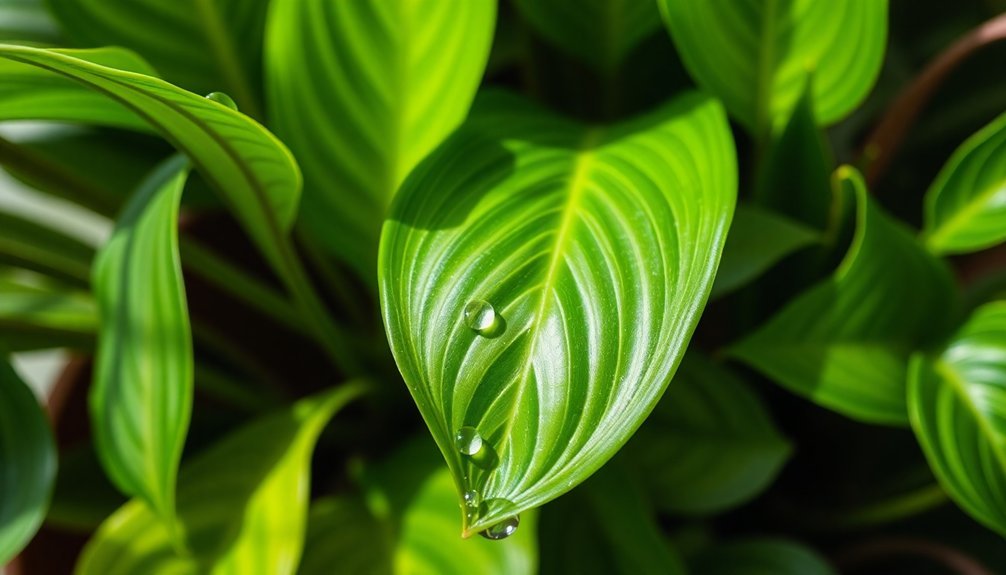
Nature's air-cleaning machines rely heavily on their leaf surface area to purify indoor environments. You'll find that plants with larger leaves, like the Rubber Plant and Peace Lily, excel at capturing airborne pollutants through their extensive foliage.
When you're choosing plants for air purification, consider the Boston Fern's lush leaves, which efficiently remove toxins from the air through their numerous stomata – tiny pores that facilitate gas exchange.
The Snake Plant's thick leaves offer another advantage, as they can store more resources to maintain consistent air-cleaning performance. To maximize your indoor air quality, you'll want to focus on plants that combine substantial leaf surface area with robust growth rates.
These natural purifiers work tirelessly to create healthier spaces through their remarkable filtering capabilities.
Top-Performing Plant Leaf Shapes for Air Cleaning
When it comes to air-purifying efficiency, a plant's leaf shape plays an essential role in how well it cleanses your indoor environment.
You'll find that certain leaf characteristics make some indoor plants superior at improving air quality.
- Broad leaves, like those on Peace Lilies, offer maximum surface area for absorbing pollutants.
- Plants with a waxy coating, such as Snake Plants, excel at trapping dust while conserving moisture.
- Finely divided leaves found on Boston Ferns create multiple filtering surfaces to capture harmful particles.
- Spider Plants' distinctive arching leaves promote better airflow, enhancing their purifying capabilities.
- High chlorophyll content in leaves, as seen in Aloe Vera, boosts photosynthesis and pollutant absorption.
Choose plants with these leaf characteristics to maximize your home's air-cleaning potential.
Each shape serves a unique purpose in purifying indoor air, making them valuable additions to your space.
Large-Leaved Plants vs. Small-Leaved Plants in Air Quality
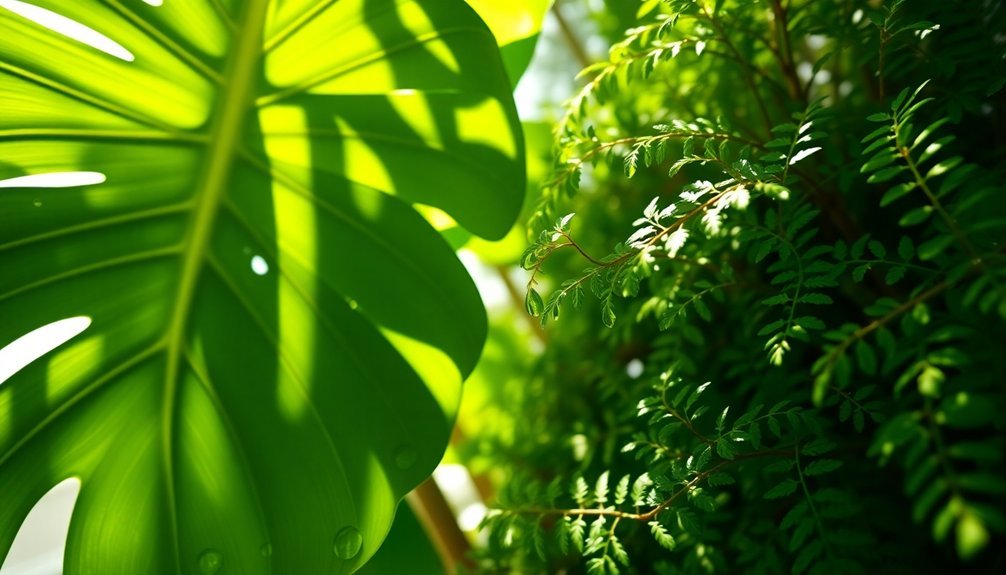
The size of a plant's leaves considerably impacts its air-purifying capabilities in your home. Large-leaved plants, such as Rubber Plants, excel at filtering indoor air pollution by capturing more airborne pollutants through their expanded surface area.
They're particularly effective at removing harmful substances like formaldehyde from your environment.
While small-leaved plants do contribute to air purification, you'll need more of them to match the efficiency of their larger-leaved counterparts. To maximize air quality improvement, consider plants with high leaf density, like the Boston Fern, which traps toxins effectively through its abundant foliage.
As an added benefit, large-leaved plants help maintain ideal humidity levels in your space. If you're looking to enhance air quality with fewer plants, opt for varieties with broader leaves for more efficient air cleaning.
Strategic Placement Based on Leaf Structure
Understanding your plant's leaf structure helps determine its ideal placement for maximum air-purifying benefits.
You'll get the best air purification results when you position plants based on their unique leaf characteristics and light absorption needs.
- Place broad-leaved plants like Peace Lily near air vents where they can trap more airborne particles.
- Position plants with rough leaf texture, like Spider Plants, in high-traffic areas to maximize dust collection.
- Arrange upright-leaved plants near windows to optimize their light absorption and air-cleaning abilities.
- Set plants with dense foliage in spaces where you need enhanced indoor air quality improvement.
- Create groupings of varied leaf structures for thorough air purification – combine broad leaves with textured ones.
Strategic placement isn't just about aesthetics; it's about maximizing each plant's natural air-cleaning capabilities based on its specific leaf structure and characteristics.
Maximizing Air Purification Through Leaf Maintenance
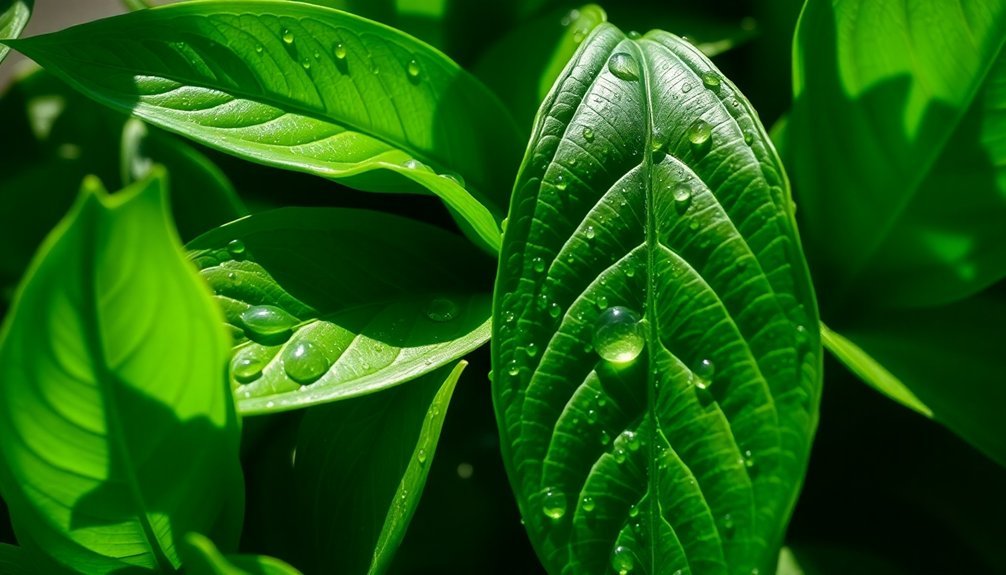
Proper leaf maintenance plays an essential role in maximizing your plants' air-purifying potential. By maintaining proper humidity and regularly wiping leaves with a damp cloth, you'll guarantee ideal light absorption for your air-purifying plants. When you're pruning dead leaves and repotting plants in nutrient-rich soil, you're creating a healthy environment that helps them photosynthesize effectively.
| Maintenance Task | Air Cleaning Benefit |
|---|---|
| Leaf Wiping | Enhances light absorption |
| Regular Pruning | Stimulates new growth |
| Humidity Control | Improves toxin absorption |
| Light Management | Boosts photosynthesis |
| Fresh Soil | Strengthens root systems |
These leaf maintenance practices aren't just cosmetic – they directly impact your plants' air cleaning potential. Remember to adjust your care routine based on each plant's specific needs to maximize their air-purifying capabilities.
Frequently Asked Questions
What Plant Purifies the Air the Most?
You'll find the Peace Lily's your best choice for air purification, as it tackles four major pollutants: ammonia, benzene, formaldehyde, and trichloroethylene. It's a powerful natural air cleaner for your home.
What Plant Removes 78% of Airborne Mold?
The Boston Fern removes 78% of airborne mold from your indoor spaces. You'll benefit from its powerful air-purifying abilities when you place it in humid areas like bathrooms and kitchens, while enjoying its lush appearance.
What Plants Are Good for Clearing the Air?
You'll find Boston Ferns, Peace Lilies, Golden Pothos, Spider Plants, and English Ivy are excellent air purifiers. They'll remove various toxins like formaldehyde, benzene, and xylene while being relatively easy to maintain.
What Plant Is NASA Recommend for Air Purifiers?
NASA recommends Peace Lilies, Spider Plants, and Boston Ferns as top air purifiers. You'll get the best results when you combine these plants, as they work together to remove different indoor pollutants effectively.
In Summary
You'll get the best air-cleaning results by choosing plants with large, broad leaves like peace lilies, rubber plants, and snake plants. Remember to place these natural purifiers where they'll receive appropriate light and maintain their leaves dust-free for maximum effectiveness. By strategically positioning multiple plants with varying leaf shapes and sizes, you're creating an efficient natural air filtration system for your space.
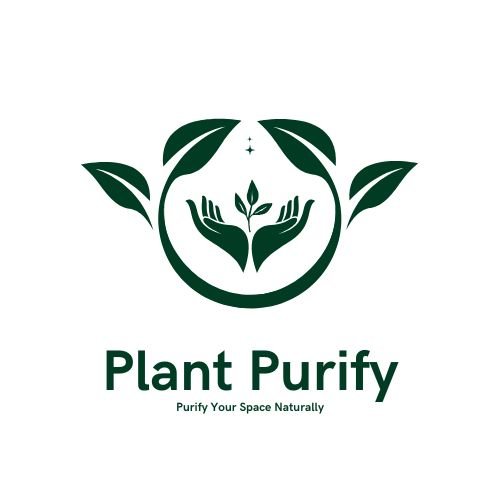
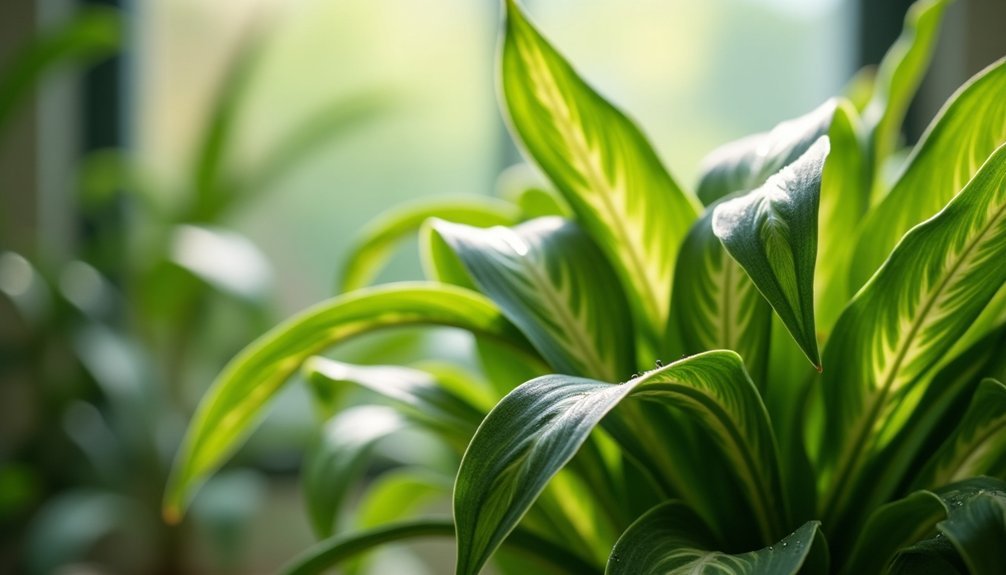
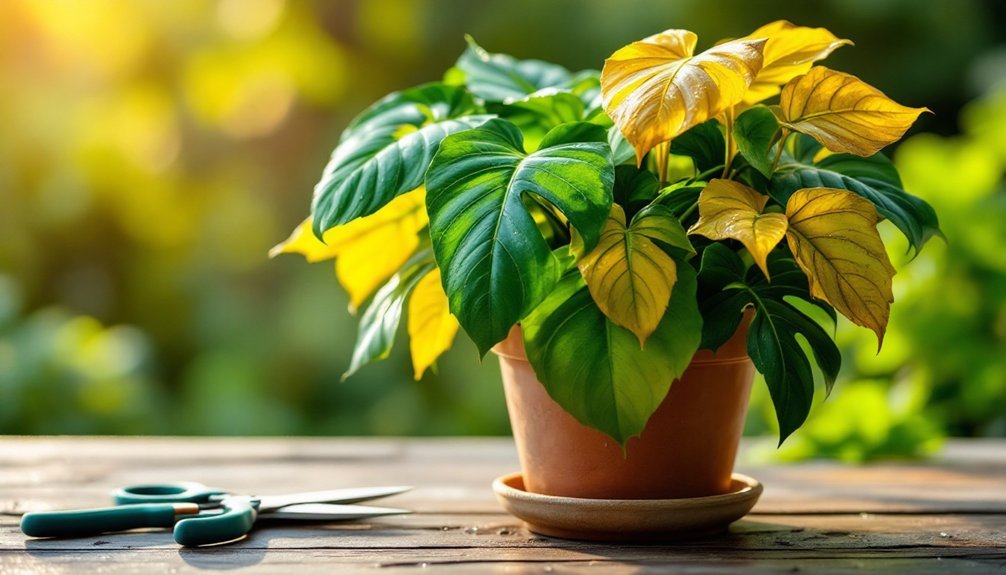


Leave a Reply